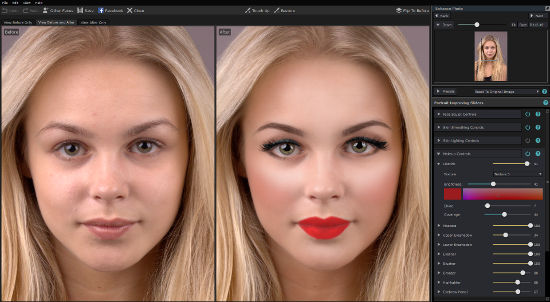Photo retouchers are editors, and you usually spend the bulk of the day staring at your computer screen with your eyes glued to those fine details. This does not include those other hours you spend staring at your mobile or tablet phone.
Sitting posture, visual fixation, and repetitive movements of your hands are among the most common habits for you. However, its salient to have knowledge of the undue stress you may cause yourself, and some of the healthy habits you need to engage to ensure you are not only comfortable but you are also energized in front of your computer to last in your dream profession for quite longer.
While this topic is rather sweeping, this article is focused on some of the best tips and tricks to help protect your vision. So, let’s move together.
Mind your workstation
Not each and every office chair or desk is configured with you in mind. It’s, therefore, important to adjust these pieces of furniture to meet your optimal conduct.
In the case of your monitor, always ensure that the positioning of the screen is in a way that prevents reflection from outdoor or overhead lighting that appears on your screen. Glare can be a major problem, especially from highly reflective sources of light like fluorescent lighting. And if you wear prescription glasses, ensure that your lenses are coated with an anti-reflective coating, to further help in preventing reflection.
When reviewing your workstation, have your monitor placed close enough to allow you read the text on your screen comfortably and without leaning forward. As for the height of your monitor, it’s recommended to have the top of your screen at, or slightly below your eye level, so that you can view it without bending your neck. these all things help you in a Professional Photo Retouching environment.
20-20-20 rule
Most retouchers have been there. It’s late at night, and you are two hours into perfecting skin texture and behold, your eyes start to irritate. It could just be a glowing headache or a subtle blurring, but you have to take a break and blink it off. Whether you are retouching, or you are in a movie marathon, your eyes are glued to the screen, and you have reached the point of discomfort – it the sucks what you are doing.
The 20-20-20 rule is perhaps the most basic and popularly used technique for reducing digital eye straining. The rule stipulates that you look away from your screen to somewhere, approximately 20 feet away, in every twenty minutes for at least 20 seconds. Alternatively, you can close your eyes for 20 seconds or preferably walk around to give your eyes and body a much-needed break.
Set a time
The 20-20-20 rule can only be useful if you adhere to it. When editing photos, time can fly, it’s, therefore, recommended that you set a series of alarms or timers to allow your screen go off after every twenty minutes to remind you that it’s time to take a break.
While you may consider this an interruption to the flow of your work, remember that eyestrain and headaches are much worse options to producing top quality work. Besides, they are health threats to your adorable long-term profession.
The blue light
Of recent, there has been a lot of chatter revolving around the blue light and its impacts on your vision as well as general health. The primary concern is that continuous exposure to the blue light at night can, at the long-run, suppress your body’s ability to secrete hormones called melatonin, in addition to adversely affecting your body’s natural clock (circadian rhythm). Besides, unlike other types of light like UV rays that can be blocked by the cornea and lens, blue light can pass through your eye’s lens, cornea and right into the retina.
You can best battle the blue light and limit its effects by keeping your retouching schedule for daytime, where possible. However, if you decide to burn the midnight oil, then it will be wise to invest in glasses that will block the blue light.
Similarly, you can reduce your time of exposure and its effects by changing the display settings of your screen to warmer color temperatures (night shift mode). However, keep in mind that this will impact on your display’s color, and hence it’s not ideal when doing any color work on your images.
Lubricate your eyes
If you realize that your eyes are dry or irritated, you can blink steadily or keep eye drops near you to refresh them.
Roll your eyes
When you feel that your eyes are getting tired, rolling them can be what the doctor ordered you to do. Close and roll your eyes in circular motion for a minute or so, or look up, down and side to side to exercise them.
Also read – How To Use Product Photography And Retouching To Achieve That Premium Look For Your Website?
Bottom line
Usually, there is no substitute for Photo Retouching professionals. It’s, therefore, wise to schedule regular eye appointments with your eye specialist for complete eye examination, because eye problems are often silent. Routine eye check-ups, preferably once or twice a year, will help to further promote the health of your eyes.

